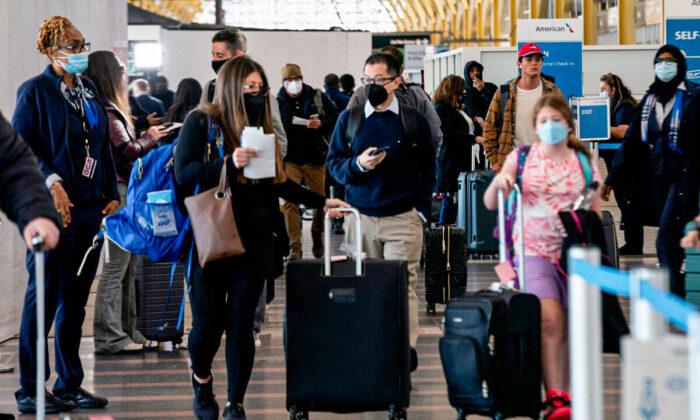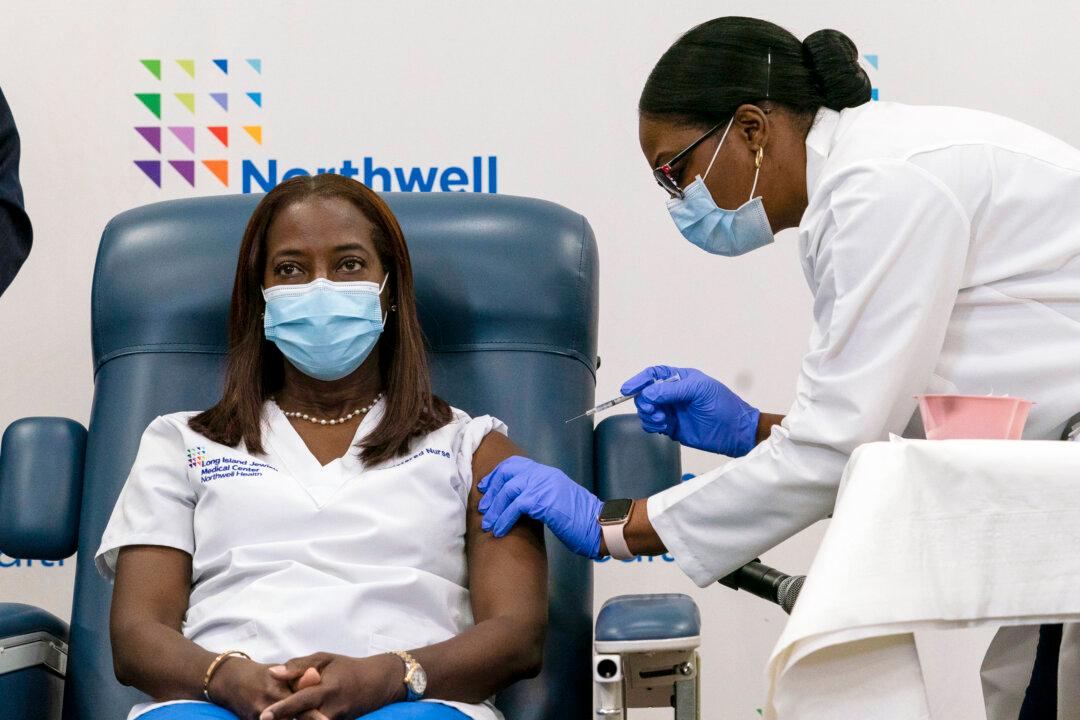The U.S. Centers for Disease Control and Prevention (CDC) this week changed its monkeypox travel alert web page that recommended people wear masks while traveling.
On June 6, the agency removed the “mask recommendation from the monkeypox Travel Health Notice because it caused confusion,” a spokesperson for the CDC told The Epoch Times on June 8, without elaborating.
“In countries where there is a current monkeypox outbreak, CDC continues to recommend masking in high-risk situations including for household contacts and healthcare workers, or for other people who may be in close contact with a person who has been confirmed with monkeypox,” the spokesperson said.
It came as some social media users made note of the mask requirement over the past weekend. Health experts have said that the virus isn’t as contagious as COVID-19.
On the same page, the CDC raised the travel alert to “Level 2” earlier this week. However, the agency said that the risk posed by monkeypox, which is generally endemic to about a dozen African countries, remains low.
Recommended precautions travelers should take include avoiding contact with sick people and avoiding contact with clothing, bedding, or other material that has been contaminated or used by those individuals. The agency also advised people not to come into contact with wild animals and avoid preparing or eating the meat of wild animals, known as bush meat.
In another update, the agency said that more than 1,088 people have contracted monkeypox in recent days around the world, and about 35 cases have been reported across 14 states and Washington, D.C. It isn’t clear if there have been any deaths associated with the virus, which is related to smallpox.
Cases are mainly concentrated in the United Kingdom, Spain, Portugal, Germany, and several other European nations. But there have been reports of monkeypox in Mexico, Israel, Australia, Canada, and the United Arab Emirates.
A number of cases have been linked to homosexual males, according to the CDC, World Health Organization, and other health agencies. The virus, however, isn’t considered a sexually transmitted disease.
“Symptoms include fever, headache, muscle aches, and swollen lymph nodes, followed by a rash,” says the CDC, noting that patients are generally ill for two to four weeks. “Lesions typically develop at the same time and evolve together on any given part of the body. Lesions progress through several stages before falling off (macules, papules, vesicles, pustules, scabs).”






